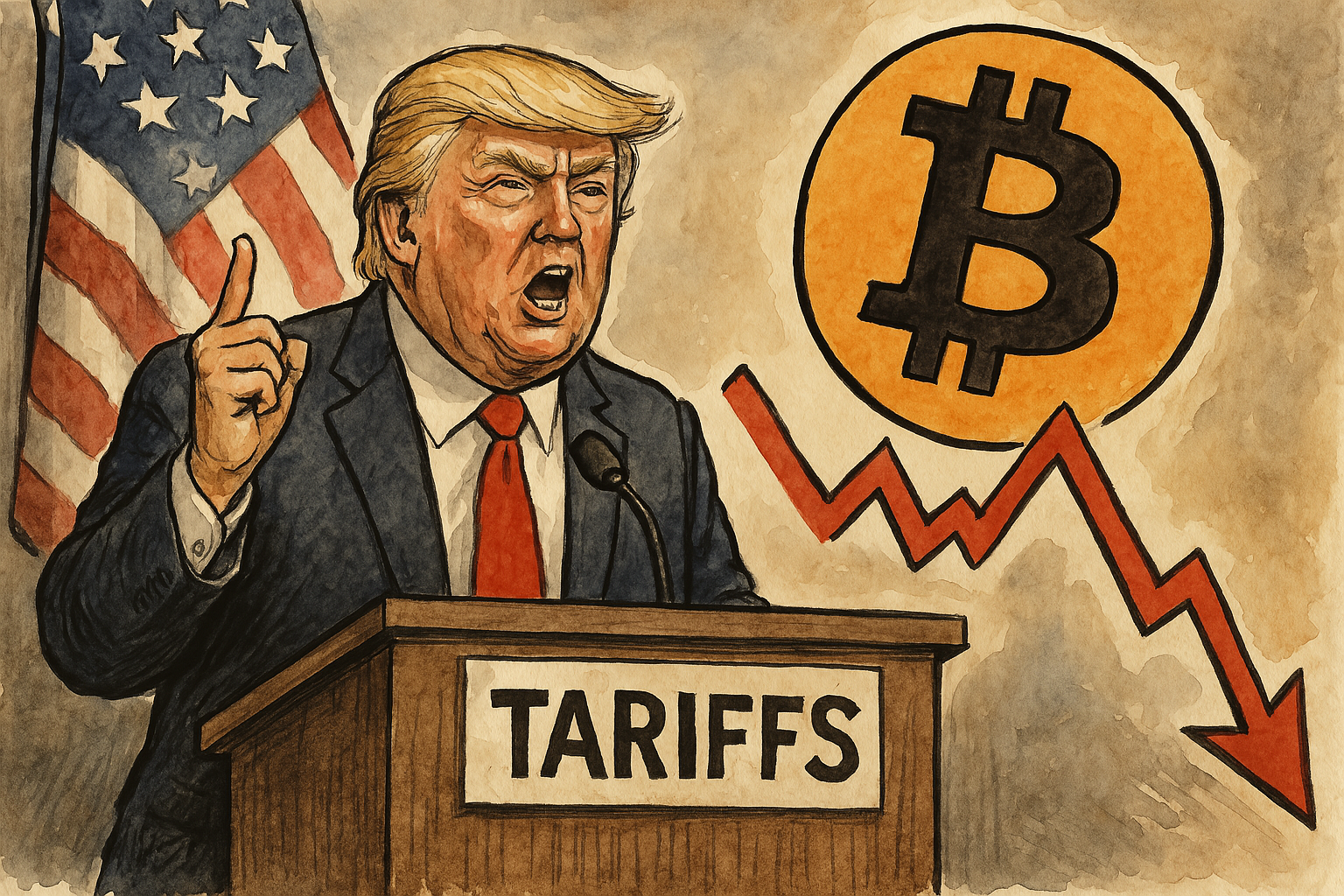
In a dramatic announcement from the White House Rose Garden, President Donald Trump has unveiled a sweeping set of new tariffs aimed at rebalancing U.S. trade relations. Dubbed “reciprocal tariffs,” the plan imposes steep duties on imports from key global players, including China and the European Union. The crypto markets, particularly Bitcoin, felt the tremors.
The New Tariff Breakdown
- 25% on foreign-made automobiles
- 34% on all Chinese imports
- 20% on imports from the EU
The tariffs are set to go into effect at midnight tonight, signaling a renewed era of protectionist economic policy.
Bitcoin’s Reaction
Following the announcement, Bitcoin prices dropped approximately 1% to $83,554. While seemingly minor, the dip reflects broader investor uncertainty in the face of heightened geopolitical tension and potential trade retaliation.
Analysts noted that the decline in BTC mirrored a simultaneous drop in equities and tech stocks—suggesting that crypto is increasingly correlated with macroeconomic sentiment.
What This Means for Crypto
- Digital Gold or Just Another Risk Asset? The price reaction calls into question Bitcoin’s long-touted status as an uncorrelated hedge.
- U.S. Political Instability and Crypto Volatility: With aggressive trade moves and upcoming elections, crypto markets may see more volatility in response to government policy.
- Safe Haven Reconsidered: If Bitcoin tracks risk assets, it may be less of a flight-to-safety play than previously believed.
Final Thoughts
Trump’s economic nationalism is back—with tariffs and bravado to match.
But if crypto wants to fulfill its promise as a financial alternative, it must prove it can weather political storms—not just ride them.
The question for investors now isn’t just “What will the Fed do?”—but also, “What will Trump tweet next?”




